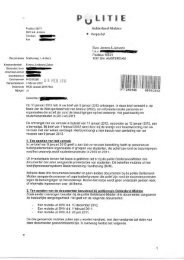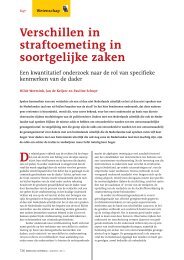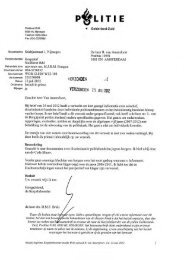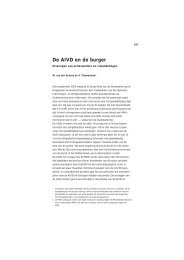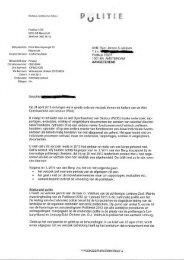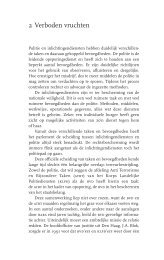Biometrics - Buro Jansen & Janssen
Biometrics - Buro Jansen & Janssen
Biometrics - Buro Jansen & Janssen
Create successful ePaper yourself
Turn your PDF publications into a flip-book with our unique Google optimized e-Paper software.
Smart cards are also introduced as personal identification cards at regional, national and<br />
international levels, such as in citizen cards, drivers’ licenses, patient cards. It is also<br />
becoming more common that contactless smart cards are integrated in International Civil<br />
Aviation Organisation [ICAO], biometric passports to enhance security for international<br />
travel.<br />
3.13 Smart Card<br />
A smart card is a chip card; it can be compared with a magnetic stripe card, in which<br />
information is stored on memory chip card. The card can be secured. The cards without<br />
security are for example phone cards. The smart card is not just composed of a memory, but<br />
also of a microprocessor, which makes it possible to communicate and make calculations.<br />
Secure Access Road BV [SAR BV] also uses the smart card for its solutions. The card is<br />
being used to speed up the verification processes and ensure reliability. Moreover the cards<br />
can be used as a facility card, parking card and more. The smart card has the chip on the<br />
card. The card needs to be inserted into the reader. Moreover it can save the information in<br />
code.<br />
The smart card technology is usually used to provide further privacy assurance to the<br />
individual. Their public/ private key pair could be embedded on the smart card along with<br />
the encrypted copy if the biometric template. This means that the biometric data has been<br />
reduced to a template and not an original copy of the biometrical data. When one enrols<br />
into a biometric system, the key pair is generated and the enrolled biometric template<br />
encrypted with the public key. On entering, the enrolled biometric is decrypted by the<br />
smart card using the private key and is then uploaded to the biometric device and<br />
compared and matched.<br />
There are still vulnerabilities involved with this system. In order to break the security of the<br />
system, an attacker must substitute an encrypted version of the biometric template both<br />
within the database and within the smart card [Fleming, S.T., p. 131, 2003]. The private key<br />
must also be obtained in order to decrypt the template or break the public‐key<br />
cryptography. In order to fool the system, the attacker would have to steal the smart card<br />
and present cloned or copied biometric data to the scanner. However the risks of these<br />
attacks are lower, because the raw biometric data has never been exposed, it is always<br />
encrypted. Moreover as soon as the loss or theft of a smart card has been discovered, the<br />
encrypted biometrics can be erased.<br />
3.14 Radio Frequency Identification<br />
The Radio Frequency Identification [RFID] is a small chip, which can be read from short<br />
distances. These information systems consisting of RFID chips exchange data with an RFID‐<br />
reader at radio frequencies. RFIDs mostly used in logistics in order to identify cargo, is<br />
29






